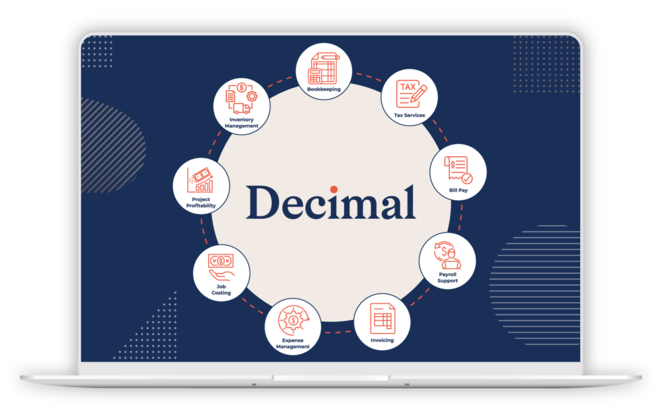Sometimes it feels like we’re constantly busy but not actually finishing much, or not as much as we think we should. We can waste time on unnecessary or overly long tasks without noticing, or our brains guilt-trip us for not doing more, even when we’re doing just fine.
I go through this too. What helps me is stepping back and being more intentional about what I’m actually doing. It’s good to pause, reassess how we’re spending our time, and find smarter ways to manage our energy. This is where a few practical strategies can help create more focus and momentum.
Do this first
Start by taking stock of what you’re actually getting done. You might be accomplishing more than you think. Track your tasks and how long each takes. You’ll likely spot patterns in a few days.
If you’re not as productive as you want (thanks, cell phone distractions), that’s still a win. Now you’ve got clarity and can start working more intentionally with the tips below.
If you’re doing better than you thought, great! Cut yourself some slack and look for ways to work smarter. Finding easier, faster ways to get the same quality of work done never hurts.
Tips for getting more done
Let’s talk about strategies to help accomplish more in less time.
Get serious about prioritizing
Focus your energy on the most important tasks first, so you avoid wasting time on low-impact activities. You can make meaningful progress much faster.
Choosing what to prioritize is the trick though. There are many approaches but choose the one that fits your brain best.
Some people use the Eisenhower Matrix, which is a tool that helps you determine priorities by dividing tasks into four categories: urgent and important, important but not urgent, urgent but not important, and neither urgent nor important. This helps you decide what to focus on, schedule, delegate, or eliminate.
While many people love this tool, I find it a bit cumbersome and tedious. I can easily get stuck in the planning and breaking down of tasks and not actually get the work done, so other methods work better for me.
I prefer a simple, intuitive approach. When I’m overwhelmed, I ask:
- What’s due next?
- What’s the next best action right now?
It sounds basic, but it helps me break free from analysis paralysis.
Sometimes what’s due next isn’t what we want to work on, so our brains trick us into looking for a different project to do instead, which leads to wasting time.
Use checklists
If there are certain tasks you do daily, weekly, or monthly and you forget about them or they sometimes fall through the cracks, use your task management system to create recurring tasks and checklists.
Not using a task management system? How are you keeping your sanity?
Set clear goals
I’m not just talking about your major life goals. Yes, those are important, but what about your weekly goals?
Each Sunday, I sit down to write what I call my ‘weekly focus document.’ Not the snappiest name, but it works. It distills my most important goals for the week.
The act of physically writing it down is what really gets it into my brain. Later that week, if I’m feeling like I’m stuck, I go back to that document and remind myself what I want to accomplish that week.
Setting clear goals helps you to know exactly what needs your attention first so you can avoid distractions that slow you down. Bonus: it also makes it easier to measure progress and stay motivated.
Eliminate distractions
I won’t go too deep into this one because I dive into it more in this article: 10 Simple Productivity Tips for the Chronically Distracted
But what I will say is I think we underestimate the amount of time it takes to task switch. By that, I mean getting interrupted, then having to shift back out of that interruption and back into work mode.
Managing distractions is huge and my number one tip is to get a pair of noise cancelling headphones. Get the huge kind that cover your ears. You’ll thank me later.
Block off uninterrupted time
Reserve certain time blocks for uninterrupted time on your calendar. This article goes into this approach and the stats behind why it works: Beating Burnout with Creativity
Time blocking in general can greatly minimize distractions and multitasking by giving your brain the space to focus (and get into that flow state), so you can actually get more done.

Batch similar tasks
Batching similar tasks helps your brain get into a groove. You can group similar activities like email clean up, calls, daily tasks and more to reduce context switching. This keeps you focused longer and boosts your overall efficiency.
Automate
There are a million and one ways to automate things, whether that be through your task management system, client management system, accounting software or something else.
Sometimes you don’t even know what’s possible to automate. I think we often don’t even consider automating a particular task simply because we assume it can’t be done.
Templates are also a huge help. If I need to send two emails out about the same thing, I create a template. I have templates for everything. It’s so much faster to copy and paste or use a keyboard shortcut than to retype and rethink it every time. Sure, it takes a little effort upfront, but it saves you time and time again.
This goes for AI prompts as well. If you find yourself asking the same types of things repeatedly, save those prompts in one place so you can reuse and tweak them instead of starting from scratch each time.
Delegate
Sometimes we don’t want to let go of the reins. A task or project feels like our baby, and we just don’t want to hand it off. I get it, but if you want to get more done, some level of delegation might need to happen.
There are other times when we think it’ll take longer to show someone else how to do something, so we just keep doing it ourselves. Don’t let that mindset control you for too long. Yes, it takes time and effort upfront, but the long-term benefits far outweigh the initial investment.
 Take breaks
Take breaks
This sounds counterintuitive, but I know you’ve had late nights, we all have, when your brain just stops working.
We have to take breaks to reset. Build them into your calendar. Set an alarm if you have to. Breaks are what give us our energy back. Also… food helps.
Reevaluate regularly
Reevaluate what’s actually working. Sometimes a method or system works for a while, but later you realize something else fits better. Keep adjusting things until it feels like it works for you.
You don’t need to build a system and stick with it forever. Things change and we have to adapt. If you’re a fan of The Office, Michael Scott said it best: “Adapt, react, re-adapt, act.”
What to remember
Getting more done in less time doesn’t mean you’re squeezing every minute out of every single day or forcing yourself to work nonstop. We’re not machines. It’s more about working smarter, creating space to focus, to work with intention and to take breaks when needed.
Experimenting is key. Think of it like a game: How can the work be done more efficiently, while still giving yourself grace along the way?
.png?width=150&height=63&name=TWRlogo-regmark_blueblack%20(1).png)
.png)










Do you have questions about this article? Email us and let us know > info@woodard.com
Comments: